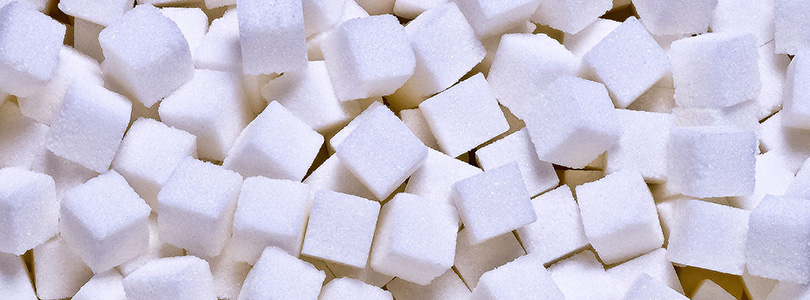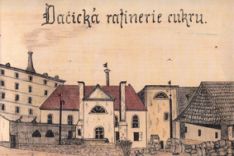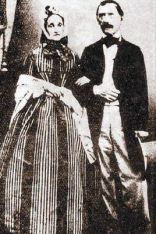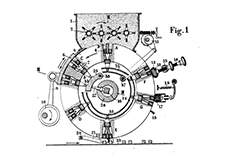Content
Cube sugar

An invention that sweetened everyday life
A very sweet story: Because his wife was said to have injured herself while breaking sugar, Jacob Christoph Rad invented sugar cubes in 1841. Until then, sugar could only be bought in the form of cones or cobs. These sugar cones were up to 1.50 metres high and hard as a rock. If you wanted to sweeten your coffee with them, you needed tools: a hammer, tongs and a sugar crusher. A tiresome and not entirely harmless drudgery!
When Juliane Rad injured her hand (presumably for the umpteenth time) while breaking sugar, she demanded - so the story goes - that her husband finally do something to get sugar into a user-friendly form. Jacob Christoph Rad was just the man to do it, because he ran a sugar factory in the Moravian town of Datschitz (now Dačice, Czech Republic). The region was a stronghold of sugar production in Europe at the time.
The trained druggist (25.3.1799-13.10.1871) was an enthusiastic tinkerer - later he was to develop (albeit unsuccessfully) an optical telegraph system. In his sugar factory, Rad experimented with a model resembling today's ice cube moulds into which he filled moistened sugar mass, pressed it and let it dry. In this way, Rad found a way to produce sugar in cube form.
The first sugar cubes he presented to his wife are said to have been two-coloured - pink and white. 180 years ago, on 23 January 1843, Rad received an imperial "privilege" for his process for five years. The product came onto the market as "Thee sugar" or "Viennese lump sugar". With some start-up time it became a great success – up until today.
Sugar as an inventive challenge

The sugar factory in Datschitz (Dačice), which Jakob Christoph Rad managed in 1840-46
The process for producing sugar cubes has been improved again and again since then. Essentially, a rotary machine is still used today, as developed by Louis Chambon in France in the 1940s and patented in Germany in 1950 ( ![]() DE814730B). Up to the present day, patent applications for improved processes have been filed again and again, for example in 2011 by Peter Joseph Hendricks (
DE814730B). Up to the present day, patent applications for improved processes have been filed again and again, for example in 2011 by Peter Joseph Hendricks ( ![]() EP2497838B1). Portioned sugar or sweetener units are also an area in which new IP rights are constantly being filed, e.g. "Sweetening bodies for beverages" (
EP2497838B1). Portioned sugar or sweetener units are also an area in which new IP rights are constantly being filed, e.g. "Sweetening bodies for beverages" ( ![]() DE202015001303U1).
DE202015001303U1).
The cone shape for sugar has survived mainly for a single application: as a component of a Feuerzangenbowle. The cone is soaked in alcohol, lit and then melts into the punch as decoratively as it does tastefully. A more recent invention enables the 1-portion Feuerzangenbowle: a small sugar cone on a skewer can be placed over a single cup and torched ("sugar stick unit",( ![]() DE202019103195U1).
DE202019103195U1).
Sugar has long had a bad reputation as a tooth enamel killer and fattener. Therefore, several synthetic sweeteners have been developed, but they are not considered particularly healthy either. To this day, people are working on replacing sugar with a sweetener that is as healthy as possible. A recent example is "cocoa-based food product without added sugars or sweeteners": Vegetable fibres, texture regulators and flavourings are to replace the sugar in cocoa products, but these are to "still have the typical pleasant taste for the palate of the consumer of preparations of this kind" ( ![]() DE202019105314U1).
DE202019105314U1).
Indispensable as an orientation parameter
In recent years, the sugar cube - which has long been available in other shapes such as hearts or shamrocks - has fallen somewhat out of fashion compared to the caster sugar bag. But it remains a constant in our everyday diet - for example, if you want to visualise the sugar content of certain foods: a bottle of ketchup contains an average of 46 cubes of sugar, a packet of wholemeal muesli 45, a litre of cola 31. A can of pineapple hides about 30 cubes, a fruit buttermilk about 21.
But how much loose sugar is actually equivalent to one cube? A teaspoonful? Teaspoons often come in different shapes and sizes - how is it possible to give a reliable indication of quantity? This gap is closed by ![]() DE202020000100U1: the "spoon with angular receptacle for portioning sugar or similar" holds a quantity that corresponds exactly to one sugar cube.
DE202020000100U1: the "spoon with angular receptacle for portioning sugar or similar" holds a quantity that corresponds exactly to one sugar cube.
Incidentally, a sugar cube has about 12 kcal/50 kJ, weighs 3 grams and, with edge lengths of 16/16/11 millimetres, is actually not a cube but a cuboid.
Text: Dr. Jan Björn Potthast, Pictures: iStock.com/paolofur, via Wikimedia Commons, via austria-forum.org, DEPATISnet
Last updated: 10 December 2025



Not only protecting innovations
Social Media